FIELD ROBOTICS
In unstructured and natural environments, robots must deal with many challenges, such as building maps of their environment, determining their absolute and relative location, path planning, and obstacle avoidance. Moreover, to successfully fulfill these missions in natural and difficult terrains, robots require a significant increase in their cognitive abilities for detection, modeling, or classification of objects.
In these projects we develop and implement a set of new tools that will build upon previous results of the research group to advance towards the goal of a long-range exploration robot. These tools include the generation of maps of the environment with different levels of interpretation, as well as the inclusion of semantic information for the interpretation of elements different to the ground.
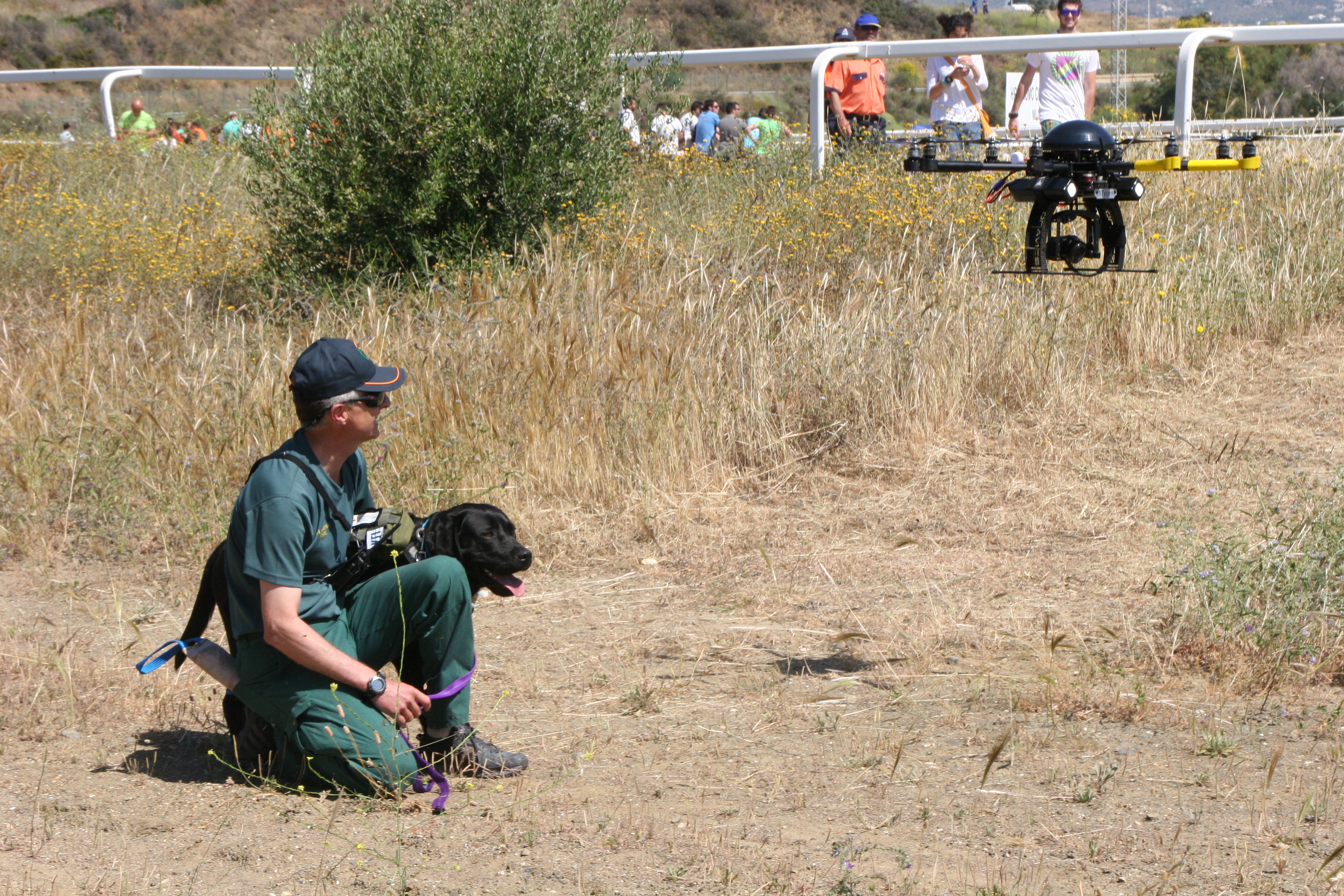 | DPI2015-65186-R FIRST-ROB: MULTI-ROBOT SYSTEM FOR COOPERATION WITH FIRST RESPONSE HUMAN AND CANINE RESCUE TEAMS IN CATASTROPHE SCENARIOS The major motivation of Rescue Robotics is saving human lives. However, in spite of the growing interest in this application, the adoption of rescue robots is still scarce. In order to fulfill its enormous potential benefits for society, the development of this novel technology not only has to improve the reliability of existing systems in the hard conditions of disaster scenarios, but also has to target the actual needs and protocols of emergency response experts, agencies, and teams. ...read more |
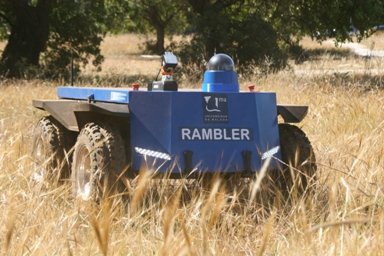 | CICYT DPI2011-22443 RAMBLER: TOWARDS LONG-RANGE EXPLORATION ROBOT AUTONOMY IN NATURAL ENVIRONMENTS In long-range exploration missions, robots must deal with different tasks, such as building maps of their environment, determining their absolute and relative location, path planning, and obstacle avoidance. Moreover, to successfully fulfill these missions in natural terrains, robots require a significant increase in their cognitive abilities for detection, modeling, or classification of objects …seguir leyendo |
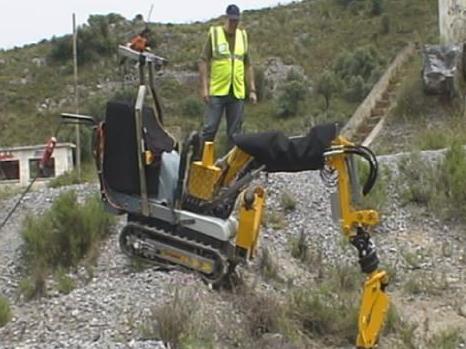 | CICYT DPI2008-00553 3D MANEUVERING STRATEGIES FOR A TELE-AUTONOMOUS SEARCH AND RESCUE MOBILE ROBOT OPERATING IN NATURAL AND DISASTER SCENARIOS (REMOTE). The primary objective of this project is to develop new methods and techniques for the exploration of natural areas and environments affected by disasters, and to support the search and rescue of hazardous objects and victims. The mobile manipulator to be used in this project is based on ALACRANE-I, …seguir leyendo |
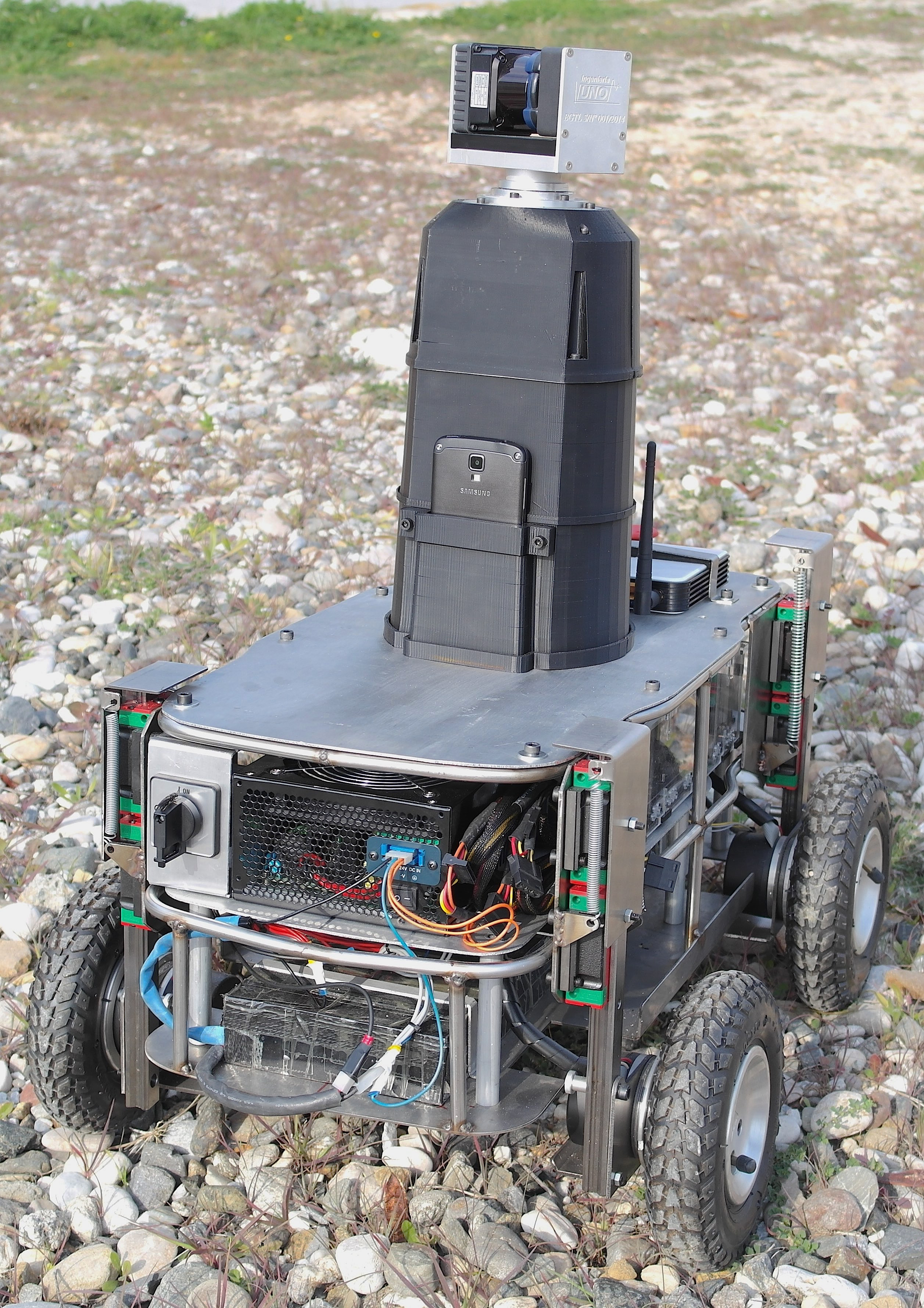 | P10-TEP-6101-R NAVEGACIÓN AUTÓNOMA DE UN ROBOT MÓVIL 4X4 EN ENTORNOS NATURALES MEDIANTE GPS DIFERENCIAL Y TELÉMETRO LÁSER TRIDIMENSIONAL. La navegación autónoma de robots móviles en entornos naturales resulta mucho más compleja que sobre entornos artificiales, ya que estos últimos sí están preparados para la circulación de personas o vehículos. En este proyecto de investigación se pretende alcanzar la navegación autónoma de un pequeño robot móvil 4x4 en entornos naturales …seguir leyendo |
ATICA (ALL TERRAIN INTELLIGENT COMPACT & AUTONOMOUS VEHICLE) Programa FEDER-INNTERCONECTA del CDTI, financiado por Grupo Iturri cuyo objetivo principal es el diseño y desarrollo de un vehículo logístico con sistema de navegación autónoma y movilidad todoterreno. Permite operar como un vehiculo convencional, en modo teleoperado, o en modo autónomo, como vehiculo único o en convoy. | |
HY88 VEHÍCULO 8X8 CON PROPULSIÓN HÍBRIDA-ELÉCTRICA El proyecto está liderado por el Grupo Iturri. El objetivo fundamental es el diseño de un vehículo de tracción (8x8) con propulsión híbrida, de 20 toneladas. El proyecto fue financiado por el Programa de Fondos Tecnológicos - Proyectos Integrados (CDTI) y cofinanciado por FEDER (Fondo Europeo de Desarrollo Regional) | |
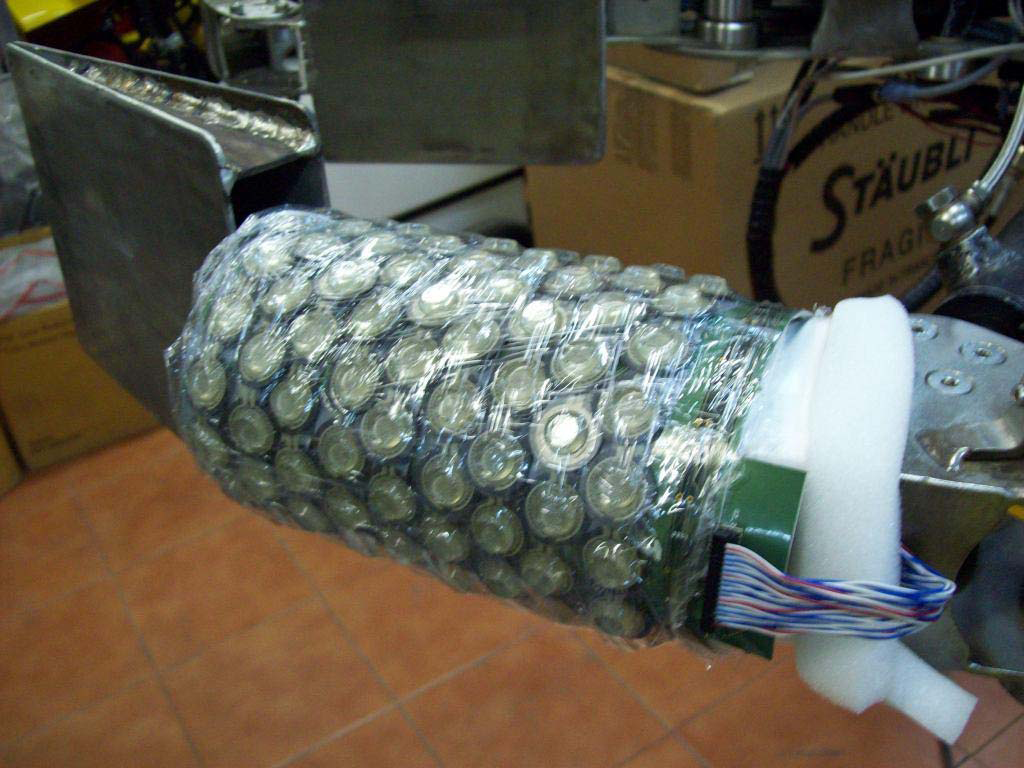 | P06-TEP-01379 TELEOPERACIÓN DE MANIPULADORES MÓVILES DOTADOS DE SENSORES TÁCTILES EN ESCENARIOS DE CRISIS (TELSTAR). Se aborda el problema de la manipulación tactil con manipuladores móviles en aplicaciones de rescate. A partir de la construcción de una matriz de sensores táctiles, se ensayan distintas técnicas para la estimación / obtención del mapa de presiones del sensor, y la reprogramación del robot para generación de movimientos seguros en manipulación de victimas, o de elementos sensibles. |
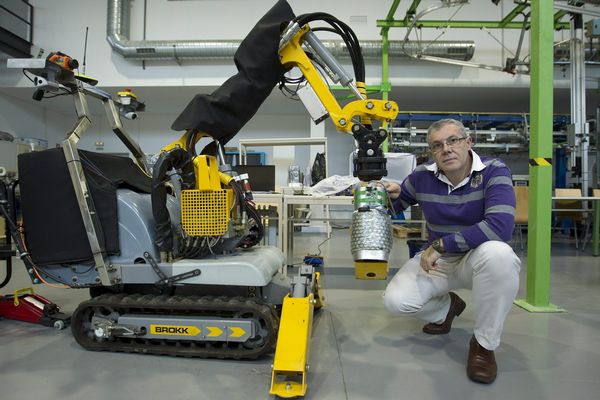 | CICYT DPI2005-00207 ASISTENTE ROBÓTICO MÓVIL PARA MISIONES DE EXPLORACIÓN Y RESCATE. The major goal of the ALACRANE Project is to develop new methods and techniques for mobile robotic assistants in missions of exploration, search and rescue. Particularly, the robotic assistant consists on a mobile robot equipped with an 4 DOF hidraulic manipulator and a couple of 4 DOF aditional manipulators. The assistant will be coordinated with another mobile robot with a trailer, so that objects can be loaded and unloaded. …seguir leyendo |
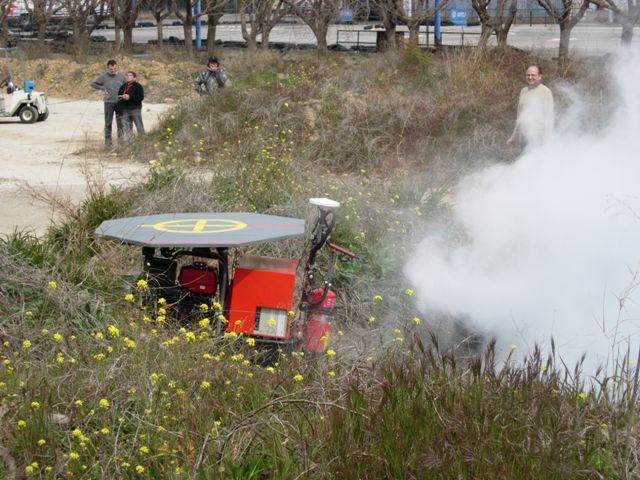 | CICYT DPI2002-04401-C03-01 Proyecto CROMAT. TELEOPERACIÓN Y CONTROL COORDINADO DE SISTEMAS MULTIRROBOT. CROMAT PROJECT: The main objective of the CROMAT project is the development of new methods and techniques for the cooperation of aerial and ground mobile robots. It is intended to develop technologies that could be used in applications such as inspection of utilities, infrastructure and large buildings, disaster detection and monitoring (fires, floods, volcano eruptions, earthquakes), exploration, surveillance, urban safety, humanitarian demining. …seguir leyendo |
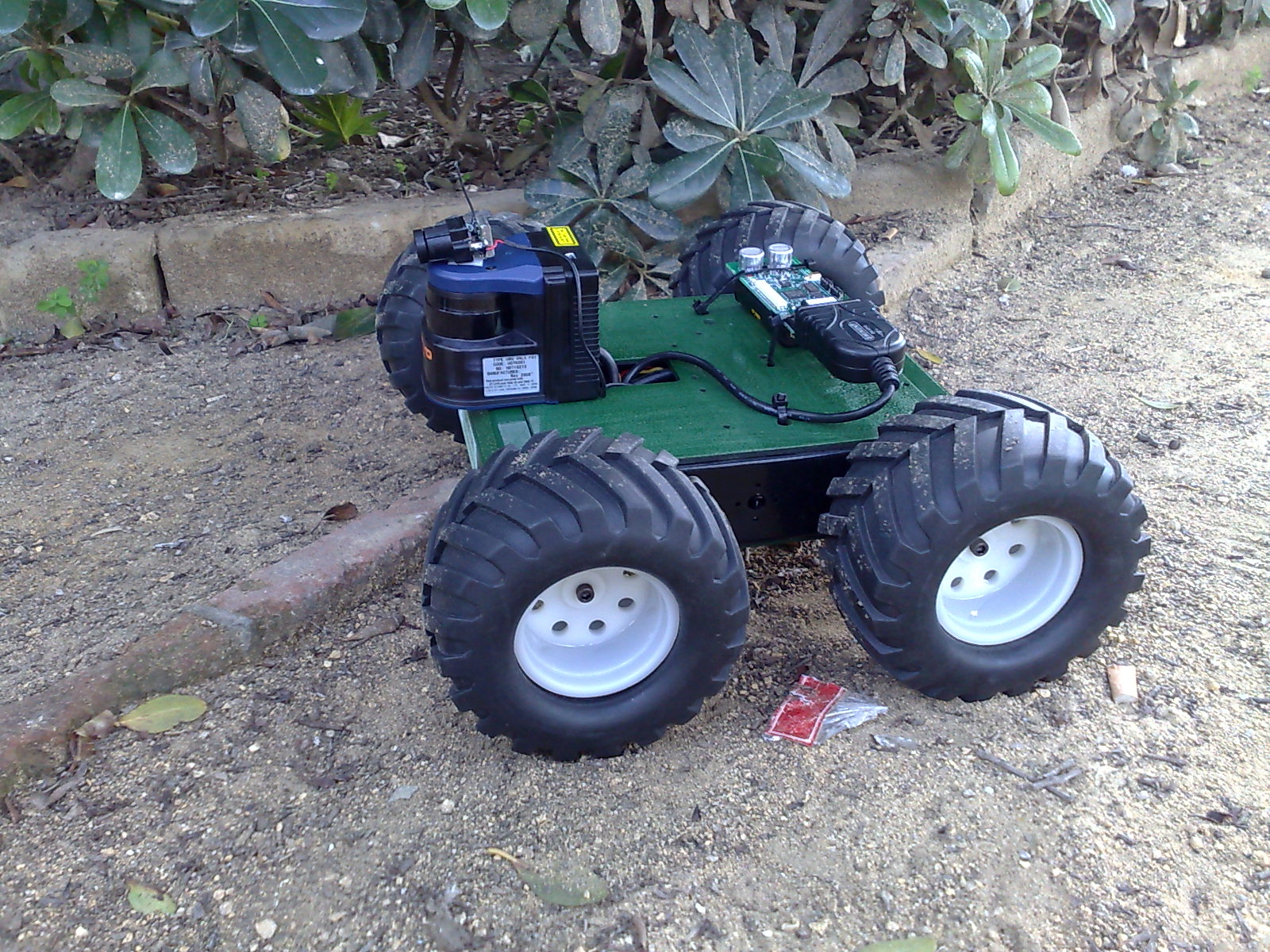 | EXC/2005/TEP-375 SISTEMAS AUTÓNOMOS Y DISTRIBUIDOS PARA LA CONSERVACIÓN DEL MEDIO NATURAL Desarrollo de soluciones para la monitorización de entornos naturales, y fauna protegida mediante robots aéreos y terrestres dotados de redes de sensores inalámbricas. Coordinado por el grupo de robotica y visión (GRV) de la universidad de Sevilla, participaron más de 20 doctores de la Univerisdad de Sevilla, la Universidad de Málaga, y científicos de la estación biológica de Doñana (CSIC). |



